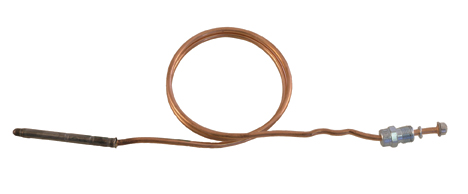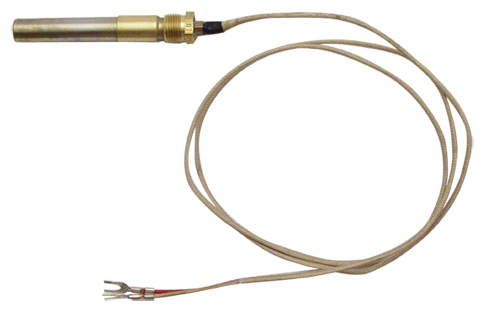This article will deal with common maintenance issues regarding commercial gas kitchen equipment. I will address issues with electric equipment in a future article.
It has been my experience that most commercial restaurant equipment is operated with natural gas. In general I believe gas equipment to be better than electric with regard to maintenance issues. Most of the systems used to deliver the gas to the burner are simple and easy to fix.
As I have said in previous posts, I don’t know how comfortable you are with working on this equipment but even if you are not comfortable at all, there are things you as a owner/manager can do to keep your service calls down and save you money on a service call if you have to have one.
In general, all gas equipment works the same way. The first thing you need to know is if your particular equipment is equipped with a “standing pilot” or “electronic ignition” (also called “spark ignition”).
The best way to determine this is by reading the service manual. If you don’t have a service manual you can determine the type of pilot system you have by visually inspecting the equipment. You will have to remove the cover that hides the burner. Once you have the cover removed look at the burner. Do you see a little fire (about the size of a lighter flame)? If you do this is what is called a “standing pilot.”
If you don’t see an actual pilot (actual flame) you probably have electronic ignition. If you have electronic ignition you will see a heavy wire that leads from the control module to the burner. A control module will look like a small box with a plastic cover and will have several wires going to it. The heavy one will look a lot like a spark plug wire (usually gray in color) that plugs into the module and leads to the igniter (this is the part that causes a spark very close to the burner when you turn the gas on).
OK, now you should know if your particular equipment has a standing pilot or electronic ignition (you might find both systems in the same kitchen).

If it is a “standing pilot” you will notice a small piece of metal that is about the size of a small pencil tip (about 2 inches long) that is in the flame. This is a thermocouple or a thermopile. It will have a tiny brass colored tube connected to it (most thermocouples) or a small wire coming out of it (most thermopiles). It might be flat on top (most thermopiles) or have a rounded point (most thermocouples).
This little piece of metal is the most likely item to go out and prevent your equipment from working. The good news is the cost of the actual part is not high.

The labor cost, however, can be expensive. What a thermocouple or thermopile does is send a signal to the gas valve (or safety valve) to let the valve know that a fire is present before it allows gas thru the valve to ignite the burner. The reason these go out is because they run 24/7. Even when the equipment is off, there is still gas going to the pilot light to keep the equipment ready to operate. Most thermocouples or thermopiles are only screwed in to the valve (there are some that are actually built into the safety valve and can not be replaced without replacing the valve).
If I were you I would make a list of all the equipment I have that has a “standing pilot” system and locate the part number for the thermocouple or thermopile and keep a new one on hand. Please be aware that the manufacturer might use several different thermopiles or thermocouples on different equipment (even if made by the same company).
Get the model number and serial number off the equipment and call a parts supply to buy a replacement. This is without a doubt the most likely part to go out and cause your gas equipment to quit working. Even if you call someone in to repair the equipment; it is better to let them use the one you provide (the repair companies often “mark up” the parts they charge you for).
In any case they don’t cost much and it could mean the difference between having your equipment working or not. Some are easy to change, some are difficult (Vulcan fryers come to mind when I think of difficult thermopiles) but the equipment will not work without them.
In a future article I will talk a little about safety valves (the second most likely thing to go out), and whether it would be cost effective to stock some of these that is on your most critical equipment.
Electronic ignition (or spark ignition):
These systems use a small electric spark to ignite the burner. When you turn on the equipment and listen close you will hear a small “click” or “snap” that might happen several times before the burner ignites.

That’s the igniter sending a small spark across two points. The most likely item to go out on this system is the control module (described above). These parts can be expensive but it could be worth keeping an extra one on hand for critical pieces of gas equipment.
These are good units and I don’t have many go out but it is another part that you HAVE to replace if it does go out (in other words, you can not fix a control module). Some of these come with a replacement wire (looks like a spark plug wire), some will not. If I replace the module I replace the wire. The wire plugs in and is easy to replace.
Before I end this entry, I need to warn you that working with gas can be dangerous!
You must always turn the gas off before working on this equipment!
There are things you as a owner / manager can do but you will have to invest the time to educate yourself on the safe way to do it. I will take this opportunity again to urge you to get the service manual for your equipment and buy Don Walker’s book Keeping Your Gas Restaurant Equipment Cooking. It has a lot more detail than I can give you in a short blog entry.
Before taking action from the content or resources published here, we request that you visit and review our terms of use.
I’ll sum this up by saying: you can save yourself a lot of money and down time by being able to do minor repairs on your own equipment.
Even if you pay someone to come out and fix the equipment you can save money if you have the right part “in stock”. In the case of the thermopile / thermocouple it is not a matter of IF it will go out, but WHEN it will go out (you can bet it will be on a Saturday of a very busy weekend if your restaurant is like the kitchen I work in).
Spend a few bucks and get the parts; it will save you a LOT of time and aspirin in the long run!
 Corner Booth Blog | TundraFMP Restaurant Supply, News & Equipment Blog
Corner Booth Blog | TundraFMP Restaurant Supply, News & Equipment Blog



